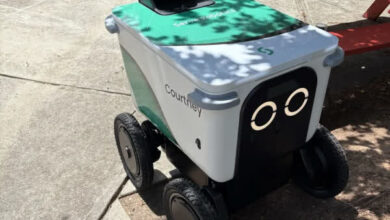Apex Legends: everything you need to know about the Titanfall battle royale

-

Apex Legends 2 got announced before Titanfall 3?
While discussing Q3 2025 earnings results, EA CEO Andrew Wilson laid out the future of Apex Legends for investors six years after its surprise launch. With “tens of millions” of regular players, there’s a significant update planned once the new Battlefield launches (it’s due out before April 2026), but that’s not all:
Our expectation is that Apex will be also one of those franchises [that last 10, 20, 30 years], and that some time, on a longer term time horizon, there will be an even bigger more meaningful update to that experience, an Apex 2.0 if you will. This will not be the last incarnation of Apex.
-

Overwatch 2 and Apex Legends follow Fortnite by going back to the beginning.
Last year’s Fortnite OG event has attracted a new round of free-to-play copycats.
Apex Legends responded to revenue that EA execs said “fell short of expectations” with a “Launch Royale” revisiting the original map and characters until November 19th.
-

Apex Legends is having a rough week


Image: EA / Respawn Entertainment
Apex Legends can’t seem to catch a break. The game has been plagued with a pair of high-profile issues for the last few weeks.
First up, earlier this week, the hero shooter’s developer, Respawn Entertainment, announced it was retooling the game’s battle pass. For season 22 and beyond, the battle pass will now be split into two halves, with 60 levels for each half. Additionally, players will no longer be able to purchase a battle pass with AC or Apex’s in-game currency. “The decision to move from AC to real world currency is not one that we made lightly, but it does allow us to decrease the price of Premium+ for our community,” the announcement read.
-

Apex Legends locks things down and brings back Three Strikes.
The developers of Apex Legends announced a new collection event, the return of the fast-paced Three Strikes mode that brings bad players (like me) right back into the action, and a new “Apex Rumble” asynchronous tournament system.
But most importantly, TechCrunch reports that the hacker behind last month’s ALGS incident says the exploit he used to hack streamers mid-game has been patched.
-

Apex Legends devs confirm esports hacking incident, respond with ‘layered’ updates


Apex Legends has postponed the North America finals for its Global Series championship over concerns that hackers have compromised the “competitive integrity” of the game. Two professional players from major teams were targeted while livestreaming on Sunday by an attack that forcibly applied advantage-granting cheats during competitive gameplay.
The cause of these attacks hasn’t been officially verified, leading to speculation that the hack may have been delivered via Apex Legends’ anti-cheat protections. An exchange posted by a cheat monitoring account on X claims that the attacker found an RCE (or remote code execution) exploit to run their code directly on the players’ computers.
-

Overwatch 2 and Apex Legends hit the reset button.
Over the next couple of hours, the two games I play the most are releasing massive updates, with changes to ranked tier systems, character abilities, and either 120Hz refresh rates or new bullet sizes.
With games like Baldur’s Gate 3 and Spider-Man 2 atop the sales charts, these live service games need something new to keep going — and hopefully, with these changes they find it.
-

The fifth anniversary of Apex Legends is bringing big changes.
There’s a new in-match progression system that gives players choices in ways to upgrade their legend’s abilities, and shields work completely differently. Oh, and after a long wait, 120fps Performance Mode is finally coming for PS5 and Xbox Series consoles.
-

Cross-progression is finally coming to Apex Legends.
Apex Legends has thrived since its surprise launch four years ago, and while it has thrived since then, the fact that players couldn’t migrate acquired content and stats across platforms has become ridiculous as competitors like Fortnite, Warzone, and even Overwatch merged accounts across PC, PlayStation, Xbox, and Switch.
-

Apex Legends: Resurrection is another fresh start for EA’s battle royale


Image: EA
More than four years after its explosive launch shook up the battle royale market, Apex Legends is looking for yet another fresh start (no, that fresh start doesn’t include any updates about cross-progression or 120fps on consoles) when its new season, Resurrection, launches on August 8th at 1PM ET.
In the new season, the Apex developers are undertaking a campaign to rework and revisit existing elements, starting with one of the game’s older characters, Revenant.
-

April Fools’ 2023: Apex Legends.
Combining last year’s Nessie-shooting pistol and the “Mozambique here!” joke that’s been present since Apex Legends launched, Respawn has made (what used to be) the game’s worst gun into an assortment of other weapons.
Pinging a door or other weapon turns it into one of several random Mozambiques that have properties of other guns that have been removed from the game, as well as the Nessie variant.
-

The new season of Apex Legends won’t add a new character, but it does have a new weapon and team deathmatch.
Respawn and EA’s battle royale shooter celebrates its fourth anniversary with a 16th season, dubbed “Revelry.” It arrives as its mobile version meets an untimely end, and players ask for changes to keep things fresh.
Polygon has more details, including a reclassification of the game’s characters, a playlist of rotating alternate modes, and bot matches to help new players get their feet wet when it launches on February 14th.
-

Apex Legends’ new character comes with a cute sidekick and a big sniper rifle
Apex Legends continues to hold its players’ attention even after several years on the market, and next week, the battle royale shooter will bring things back to where they started with a new season that revisits the game’s original map. This year, the game already added two new characters (plus two more in the new mobile version), brought upgrades for next-gen consoles, rotated in a well-received Control game mode, and, according to EA’s earnings call this week, notched double-digit income growth again for the last quarter. On the other hand, player complaints over glitches, ranked mode scoring, matchmaking, and practically any other small detail continue to mount.
The last season was particularly troubled, with problems that affected one of the game’s best features — its responsive controls — and enough bugginess that it even popped up during a professional Apex Legends tournament last month.
-

Xbox input lag for Apex Legends is finally fixed, two weeks later
Update July 5th, 2:30PM ET: On Tuesday afternoon Respawn and EA released a new patch saying it should address the issue, and after playing a bit I can confirm it has fixed input lag with all the controllers I used on Xbox Series X.
Last week, EA’s battle royale shooter Apex Legends launched a “collection event,” which is shorthand for a limited-time setup that is mostly about players buying a bunch of cosmetic items from the in-game store. The only problem is that this time, the massive update has made the game nearly unplayable for many people on consoles.
-

Apex Legends season 13 pushes teamwork with a new kind of hero and ranked mode changes
Over the last few seasons, the developers of Apex Legends have worked on opening up the game, both with a massive new map and adding a temporary game mode that swaps out battle royale action for a more traditional team deathmatch. On May 10th, they’re introducing another new legend to the arena with Newcastle and making changes that might help players focus on teamwork.
Season 13 of Apex Legends carries the title Saviors, which matches Newcastle’s kit of abilities that are about keeping his teammates alive longer to help them win fights. While a slew of leaks in the past few months spoiled some of the surprises, seeing him in action is an entirely different thing. He has a passive ability that is unlike any character we’ve seen before, with the ability to not only shield downed teammates while reviving them, but he can also drag them to safety. The shield’s power level increases if Newcastle is carrying a higher-tier knockdown shield, which adds another tweak to an often overlooked item.
-

Apex Legends next-gen console updates with 4K and HDR launch tomorrow
Respawn Entertainment has confirmed that Apex Legends upgrades for the PS5 and Xbox Series X / S consoles will launch tomorrow with the new Warriors collection event. Until now, the battle royale shooter has shared versions across the console generations. But when the update is released — usually around 1PM ET — console players will finally be able to join those on PC with support for natively rendered 4K (except on the Series S), HDR, better shadow maps, and greater level of detail distances.
All versions on consoles are still limited to 60Hz, with 120Hz gameplay listed as an upgrade coming in the future (however, once the PS5 supports 120Hz output, it will be able to force it even on games that don’t have support built-in if you want to give it a try). When I talked to the developers before the launch of the current season, Defiance, they said that we would see new next-gen features roll out throughout the year with the new seasons. Other features confirmed in the works are adaptive trigger and haptic support for the PlayStation 5 DualSense controller.
-

Apex Legends turns three and prepares to change everything with the launch of Defiance
In 2019, Respawn Entertainment surprised gamers by following up its Titanfall games with something slightly different, instead opting for a take on the (then) new and growing free-to-play battle royale genre with Apex Legends.
You know what happened next. After a healthy dose of promoted live streams, the game quickly carved out a unique space and grew rapidly in popularity, racking up 25 million registered players in one week and crossing the 100 million mark in time for its second birthday. Now, Apex Legends is turning three, and in a conversation with The Verge, game director Steven Ferreira said that this year, players should expect to see the title do things that are completely unlike what we’ve seen so far while still keeping the battle royale as the core of the game.
-

Apex Legends: Escape takes the battle royale shooter on vacation at the perfect time


Image: EA
In the years since Respawn and EA launched Apex Legends, the shooter has carved out its place among a crowded field of contenders. Other games have tried to enter the market and failed to make much impact alongside the other battle royale titans like Call of Duty: Warzone, PUBG, and Fortnite. Still, despite a healthy player base and competitive scene, a new update, dubbed Escape, arrives following one of the roughest seasons since the debut, and it might be exactly what the game needs.
Last season’s new character, Seer, drew criticism from many players until Respawn nerfed his special abilities. Then that change led to its own controversy, as players accused the developers of intentionally releasing heroes with overpowered abilities to coax more money out of participants in this “free” game.
-

Apex Legends’ ranked mode will be the key to keeping it alive


Image: Respawn Entertainment
Apex Legends is one week into its second season, which features a drastically changed map, a new character to master, and a pleasantly revamped battle pass with much-needed new rewards. But the most pivotal addition to the battle royale game is its ranked mode. Split into six tiers, this new mode will likely be the lifeblood of Apex Legends going forward, keeping it engaging for competitive players and carving out a community of top-tier streamers and aspiring pros who can form the backbone of a future e-sports scene.
The good news is that Apex Legends’ ranked mode is wonderfully designed. It fixes almost every big complaint I’ve had about such modes in other games, giving me a rewarding way to spend my time in a way that never feels like a second job, as so many games-as-a-service titles like Bungie’s Destiny 2 can feel. I’ve only just started playing, but can already see myself spending dozens to hundreds of hours here, so long as Respawn keeps it from growing stale and finds ways to combat the inherent toxicity ranked modes are infamous for.
-

EA wants to bring Apex Legends to mobile


Today EA released its quarterly earnings, and unsurprisingly Apex Legends was a big hit. According to EA, the Respawn-developed battle royale game is “easily the fastest-growing franchise we’ve ever had.” What might be surprising, though, is that EA said it’s looking to bring the game from PC and console to mobile platforms. “We are in advanced negotiations to bring Apex Legends to China and to mobile,” the company said during today’s call.
Unfortunately, that’s all the information we have right now. But clearly EA is looking to keep pace with Apex’s biggest competitors, Fortnite and PUBG. Both of those games are available on mobile, though they utilize different strategies. Fortnite is essentially the exact same experience across all platforms, including mobile, while PUBG has a separate version called PUBG Mobile. Both games are massive hits; as of last December, the mobile version of PUBG had as many players as all of Fortnite, at around 200 million.
-

Respawn won’t rush Apex Legends updates so that it can ‘avoid crunch’


Image: EA / Respawn Entertainment
Apex Legends was a massive hit out of the gate, but since then, many players have complained about a lack of content updates, especially compared to the constantly changing Fortnite. Today, in a surprising reveal, executive producer Drew McCoy explained that this won’t necessarily be changing any time soon.
“Our long-term goal is to ensure Apex Legends always feels alive and thriving, with a focus on quality of content over novelty or speed of release,” McCoy wrote in a blog post. “At the same time, we want to maintain our culture as a development team and avoid crunch that can quickly lead to burnout or worse.”
-

The first Apex Legends battle pass launches tomorrow with new character Octane


Image: Respawn Entertainment
Respawn Entertainment’s fast-growing battle royale hit Apex Legends is launching its much-anticipated first season tomorrow, the developer announced this morning. The first season, dubbed Wild Frontier, will come with a Fortnite-style battle pass costing $9.50 for three months alongside the game’s newest character, the legend Octane.
Fans of Apex Legends have been anxiously awaiting the battle pass launch since the game first released at the beginning of February. As pioneered first by Fortnite creator Epic Games, a battle pass system lets players pay a small fee, typically around $10, for three months of ongoing in-game rewards and special events.
-

Twitch streamer Ninja reportedly earned $1 million for promoting Apex Legends launch


Photo by Nick Statt / The Verge
When Electronic Arts’ battle royale shooter Apex Legends surprise-launched early last month, it seemed like the entire gaming community started paying attention at once. Part of the reason for the immediate surge in interest was that EA paid top Twitch streamers to promote the game. And, in fact, one of those streamers, Fortnite extraordinaire Tyler “Ninja” Blevins, may have earned as much as $1 million for doing so, according to Reuters.
Ninja’s live-streaming and social media promotions helped Apex Legends gain traction among his 13.6 million-plus Twitch followers, as well as his Twitter following of over 4 million and Instagram audience of over 13.2 million. Now, an anonymous source tells Reuters that his efforts were reportedly worth the seven-figure sum.
-

E-sports teams are flocking to Apex Legends


Apex Legends is the hottest game of the moment, skyrocketing to 50 million registered players in its first month of existence. Its combination of lightning-quick action and squad-focused gameplay has made it not only a popular game to play, but an exciting one to watch as well. Apex regularly dominates the Twitch charts, often topping mainstay Fortnite. So it’s no surprise that Apex Legends is primed to become the next big e-sport.
Over the last few weeks, established e-sports teams have been slowly assembling Apex Legends squads. The last week, in particular, has been a flurry of announcements. TSM, 100 Thieves, Gen.G, and NRG all added either entire Apex teams or individual players over the last few days. One of the more surprising moves saw venerated e-sports organization Team Liquid move its Call of Duty: Black Ops 4 “blackout” team over to Apex.
-

There’s not enough time to play all of these online shooters


For the past few nights, most of my time has been spent exploring the fantastical sci-fi realm of Anthem, fighting off countless alien bad guys and putting far too much energy into making sure my armor is just the right color. During that same period, I’ve been getting in regular matches of Apex Legends, Respawn’s new team-based battle royale that’s perfect for people who don’t like to talk while they shoot. Meanwhile, I’ve also been preparing myself for the impending eighth season of Fornite, wrapping up a final few quests and tracking the earthquake-induced cracks in the landscape.
I’ve also realized that I don’t have time for all of this.
-

Apex Legends is a better battle royale, but I’d rather hang out in Fortnite


Even though I’ve been playing Fortnite for the better part of a year, I still get surprised by the butterflies. There I am, running along the edge of a giant crater or sneaking through a dense forest, and some blue, fluttering wings catch my eye. I don’t exactly stop and stare — that’s too dangerous in a battle royale where everyone is out to kill you — but it’s enough to capture my attention for a brief second, before I move on to explore other parts of the island.
There’s nothing similar to those charming butterflies in Apex Legends. Respawn’s Titanfall-themed shooter stormed out of the gates when it launched two weeks ago, racking up 25 million players in seven days and regularly dominating the Twitch charts. Apex isn’t the first battle royale game to challenge Fortnite, but none of its contemporaries have had this kind of momentum. Even neon-haired Fortnite star Ninja is playing Respawn’s game, winning the game’s first major tournament last week in front of hundreds of thousands of viewers.




